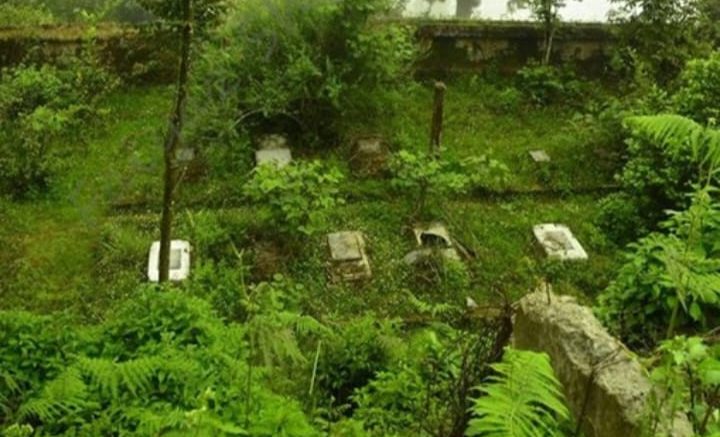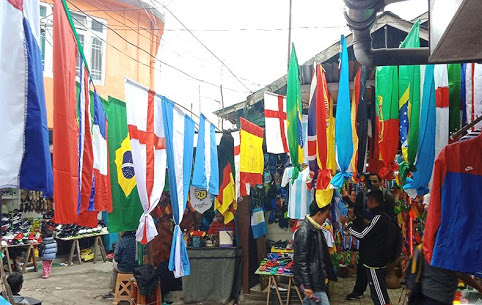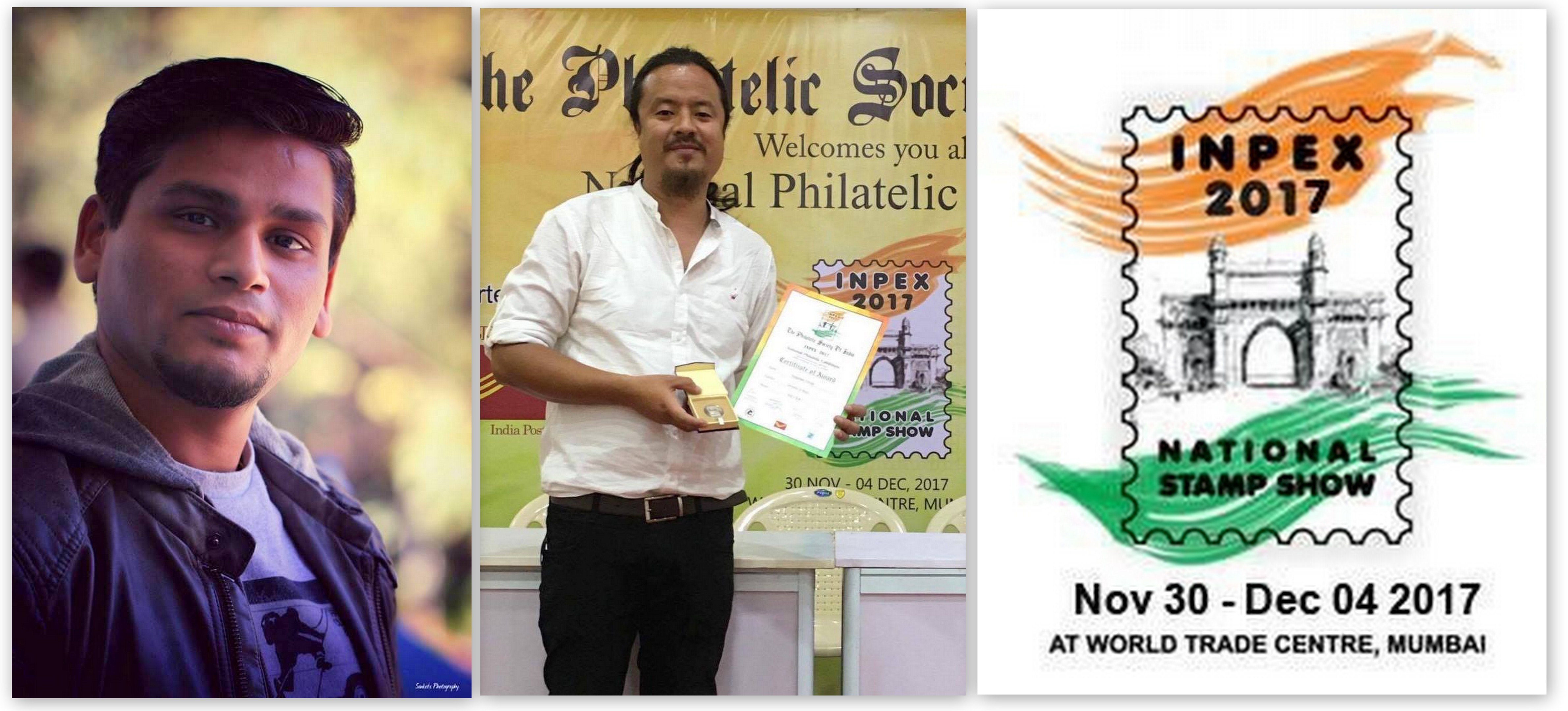The Parsi Cemetry Darjeeling by Nilima Tamang highlights an important facade of Darjeeling’s history and society.
The secret garden of my childhood still exists, though now hidden beneath wild weeds, silence and ravaged by landslide. The Parsi Cemetery at Singtom Fatak now, is nothing more than a forgotten patch of land but for many who have lived nearby for generations, this place was never just a cemetery. It was a peaceful space filled with flowers, soft light, and quiet rituals. A part of daily life we often passed by, yet never ignored wasn’t always this silent. Once upon a time, this place was more than a burial ground. It was a kind of secret garden, filled with seasonal flowers, where nature and memory lived together in quiet harmony.
I still remember how the broad path beyond the gate was built wide enough for a cart to pass. As a child, it seemed grand and purposeful, leading into a world that felt both solemn and strangely alive. To the right, a smooth pavement curved gently towards the grave almost inviting you to walk slowly, the concrete railing that lined the path inside the cemetery, had big pots at regular intervals with seasonal flowers. Simple yet beautiful in its own quiet way to notice the details to reflect.
There was a double-storied, single room caretaker’s house, standing like a silent guardian. Though modest, it gave a sense of life to the grounds. In those days, stories flowed easily, stories of ghosts, witches, and restless souls. For children, it was thrilling. For adults, perhaps a quiet respect for the unknown.
What stands out even now in my memory are the brass vases beside each grave, once polished and gleaming in the sunlight, holding offerings of flowers from the kind caretaker and ocassionally from the grieving hands. These small touches gave dignity to those who rested there.
And then there was a tiny pond filled with tadpoles which fascinated us, asthough fishes. On calm days, it reflected the blue sky above with such clarity it felt like a doorway to another world which could have been lifted from a scene in a movie. Not far from it stood a small cottage, used for ritual offerings before burials. That little structure had a mystical air about it, almost sacred in its silence. Even as children, we somehow knew to treat it with quiet respect.
Looking back, this cemetery was more than a place of endings. It was a landscape full of life, beauty, memories, photoshoots of celebrations for every family in the neighbourhood and many stories waiting to unfold. Even though the flowers may no longer bloom as they once did, and the tiny pond may be covered in weeds, this place still holds something precious. The memories of lives lived, of seasons passed, and of childhood days spent wandering among whispers of the past.
Today, it waits for someone to remember it, not just as a graveyard, but as the beautiful, forgotten garden it once was.
Those who grew up around this place remembers the beauty, the stories, and the respect with which people said their final goodbyes. It wasn’t just about loss, it was about the rituals of remembrance, about honoring the lives of those who rested there.
Tracing the roots
“Ashem Vohu Yatha Ahu Vairyo – whispering of truth, goodness, and peace”
The cemetery is believed to have been established between 1880 and 1910, during the British colonial period when Darjeeling was at its height as a fashionable hill station. During those years, wealthy and influential Parsi families such as the Dinshaws, Madans, and Dr. K. N. Master made Darjeeling their seasonal home. Some were involved in businesses like hotels and cinemas, while others worked as doctors and professionals, contributing to the town’s growing social and economic life. The members of their family are the notable ones who rests here today, along with a popular figure Aberi Saheb. Apart from them every soul who ended their journey here has it own story.
As there was no Dakhma (traditional Tower of Silence) in Darjeeling, the Parsis, who followed Zoroastrian customs, needed a burial ground, then this small cemetery was created specifically for their community, set away from the busy heart of town, nestled quietly below Singtom Fatak.
The cemetery likely received burials until the 1940s or 1950s, after which the Parsi population of Darjeeling began to decline. Families either returned to Bombay (now Mumbai) or moved abroad. Over time, the graves were left unattended. The caretaker too became a past. The brass vases disappeared for obvious reasons, the selfish desires of the miscreants.
Why It Needs Immediate Attention
Today, this cemetery is slowly disappearing under wild grass, moss, and broken stones. The caretaker’s small quarters have fallen into ruin, the once beautiful pathways are lost beneath weeds, the main entrance blocked by piles of waste and the graves have been vandalized or forgotten. The little pond that once reflected the sky like a mirror is now choked with weeds almost disappeared. This place, once peaceful and cared for, is now used by miscreants.
This cemetery is not just about graves. It is about history, memory, and respect. It reminds us that Darjeeling was once a melting pot of communities: British, Nepali, Tibetan, Lepcha, and yes, Parsi. It holds stories of lives lived with dignity, of people who contributed quietly to the town’s history. Their graves deserve better.
If steps are not taken soon, this heritage site will vanish completely, along with the stories it holds. It needs immediate attention from conservationists, historians, and even the wider Parsi community. A basic cleanup, some protection from vandalism, and recognition as a heritage site would be small but meaningful acts of respect.
From a cultural perspective preserving the Parsi Cemetery at Singtom Fatak is about protecting a part of Darjeeling’s cultural identity, a history that tells us this hill town was once home to many communities, including the Parsis. It reminds us that Darjeeling’s past was not just shaped by tea and the British, but also by smaller communities who brought with them their customs, their faith, and their quiet contributions to the life of the town. Preserving this site is a way of showing respect not just to the dead, but to the history of diversity and tolerance that shaped Darjeeling.
From a tourism perspective, the cemetery could add to Darjeeling’s heritage trail. Visitors come to Darjeeling not only for its natural beauty but also to explore its colonial past. Churches, schools, tea estates, and cemeteries tell these stories. The Parsi Cemetery, if restored and cared for, can become part of this experience. It offers a chance to tell visitors about a lesser known side of Darjeeling’s history, enriching the cultural tourism of the region.
If this cemetery disappears, we lose not just graves but a piece of Darjeeling’s soul, a quiet corner where stories, rituals, and history once lived side by side. Saving it is about honoring that past and keeping it alive for future generations to understand and respect.
Writes: Nilima Tamang




[Photos are from Faiyaz Shafique Ansari‘s 2016 report, featured on Parsi Khabar, depicting the Parsi cemetery below Singtom]






Be the first to comment on "The Parsi Cemetry Darjeeling – In The Quiet Corners Of My Childhood Memories"